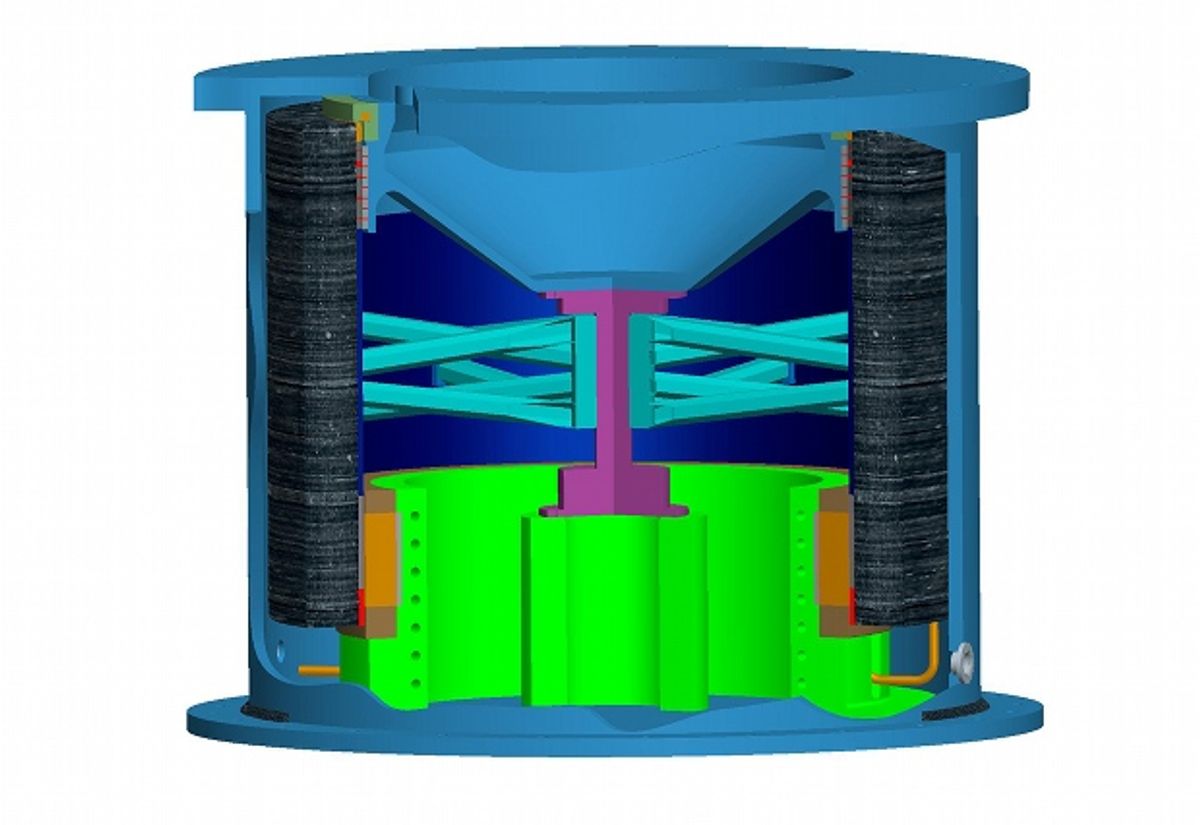The Technology Showcase at the Advanced Research Projects Agency–Energy Innovation Summit in Washington, D.C., is dotted with projects from companies, national labs, and universities that aim to change how we produce and use energy. They're all ARPA-E awardees, meaning they fall under a number of broader project categories, but what's clear from wandering the floor is how many of them are related to energy storage. A few examples of innovative energy storage projects that ARPA-E is helping get off the ground:
Beacon Power: Scaling up the flywheel
Flywheels are an old idea, so why has ARPA-E given Beacon Power more than $4 million? Because this is no ordinary flywheel. "The improved design [pictured] resembles a flying ring that relies on new magnetic bearings to levitate, freeing it to rotate faster and deliver 400 percent as much energy as today's flywheels." Well then.
ARPA-E categorizes the tech as still in the "proof of concept" stage, but Beacon does have at least one large installation of flywheel storage up and running in Stephentown, N.Y. It has built a 20-megawatt plant on 3.5 acres that lets the New York ISO improve its grid frequency regulation.
Sun Catalytix: The artificial leaf growers go for megawatt-scale storage
This company has gotten plenty of press in the last few years, including from us. But that was for work on the so-called "artificial leaf," a small solar device that mimics photosynthesis. Sun Catalytix has spun off some of that research into work on new chemistries for flow batteries, which they say will be able to scale up to grid-level storage. So far they've built kilowatt-scale devices, and are aiming for megawatts.
Energy Storage Systems: An all-iron flow battery
More flow batteries: Energy Storage Systems leaves behind traditional flow battery materials like vanadium in favor of earth-abundant iron. That is not a trivial change: it drops the per kilowatt-hour cost from around $400 to less than $200. Craig Evans, the company's president and CEO, told me they have a 1 kilowatt prototype now, and will scale up as part of the requirements of their ARPA-E award by the end of the year. And interestingly, ESS isn't the only ARPA-E awardee working on all-iron flow battery tech; Case Western Reserve University is also working toward a $200/kwh battery.
Halotechnics: Molten glass (yes, glass) energy storage
Solar thermal systems often now use molten salts to store energy: heat up the salts during the day, and when the sun goes down use that stored energy to keep the power flowing. Halotechnics' ARPA-E-funded project involves abundant glass, instead of salts, that can stay stable hundreds of degrees past other materials and are potentially much cheaper.
There are, impressively, dozens of other storage projects as well. If this trend keeps up, the common talking point regarding the lack of storage options for renewable energy won't have much stable ground under it.
Image: Beacon Power
Dave Levitan is the science writer for FactCheck.org, where he investigates the false and misleading claims about science that U.S. politicians occasionally make.



